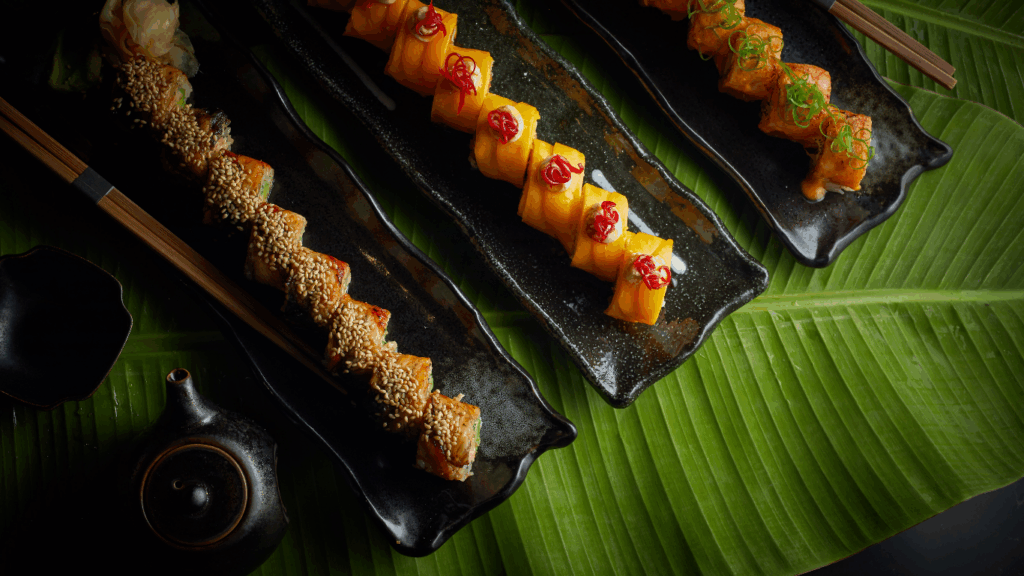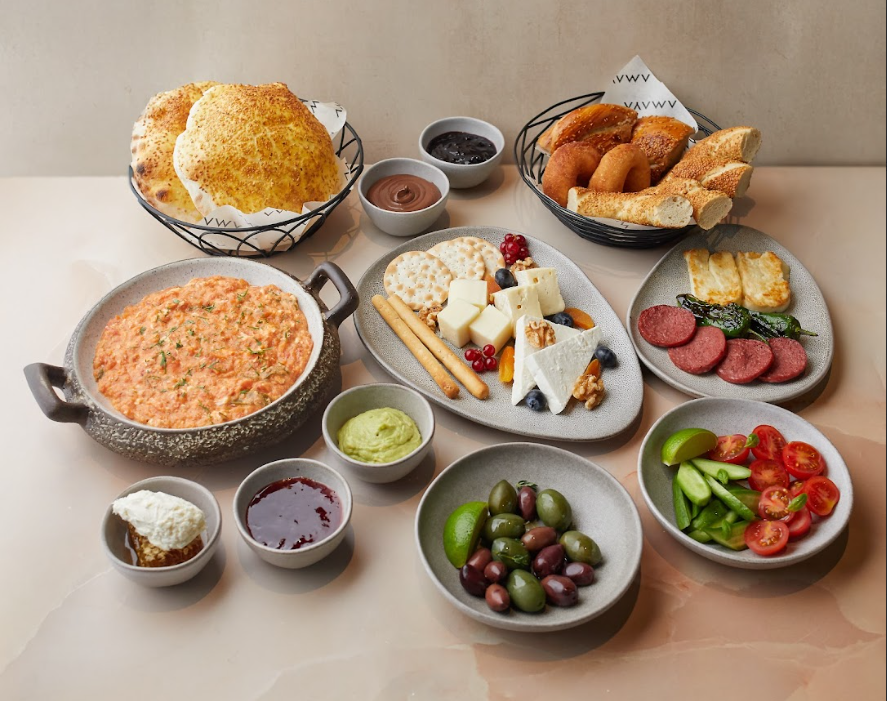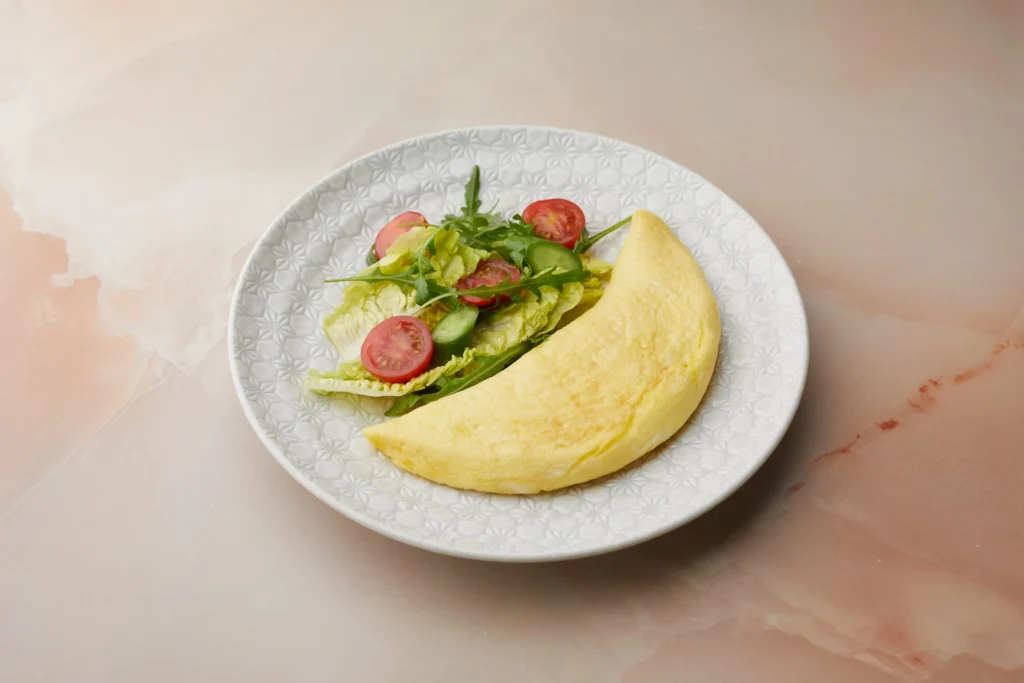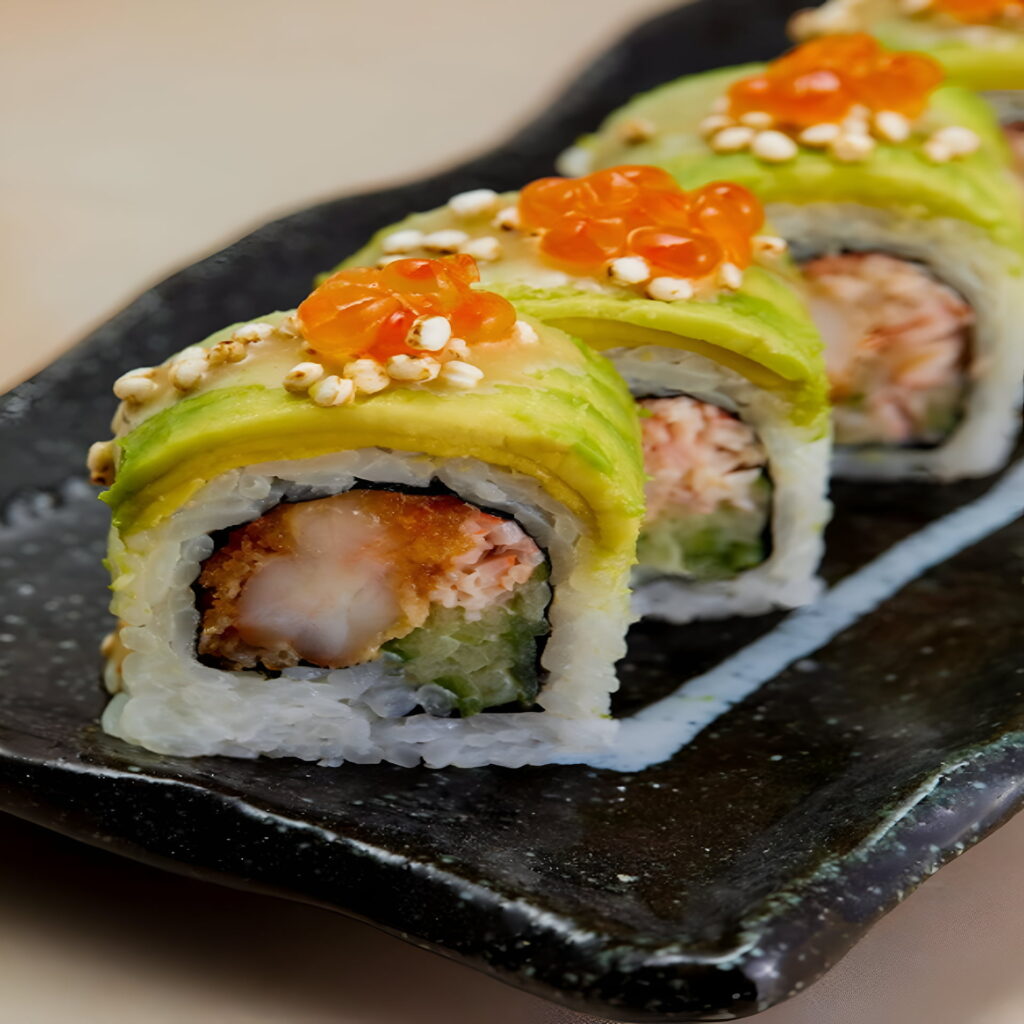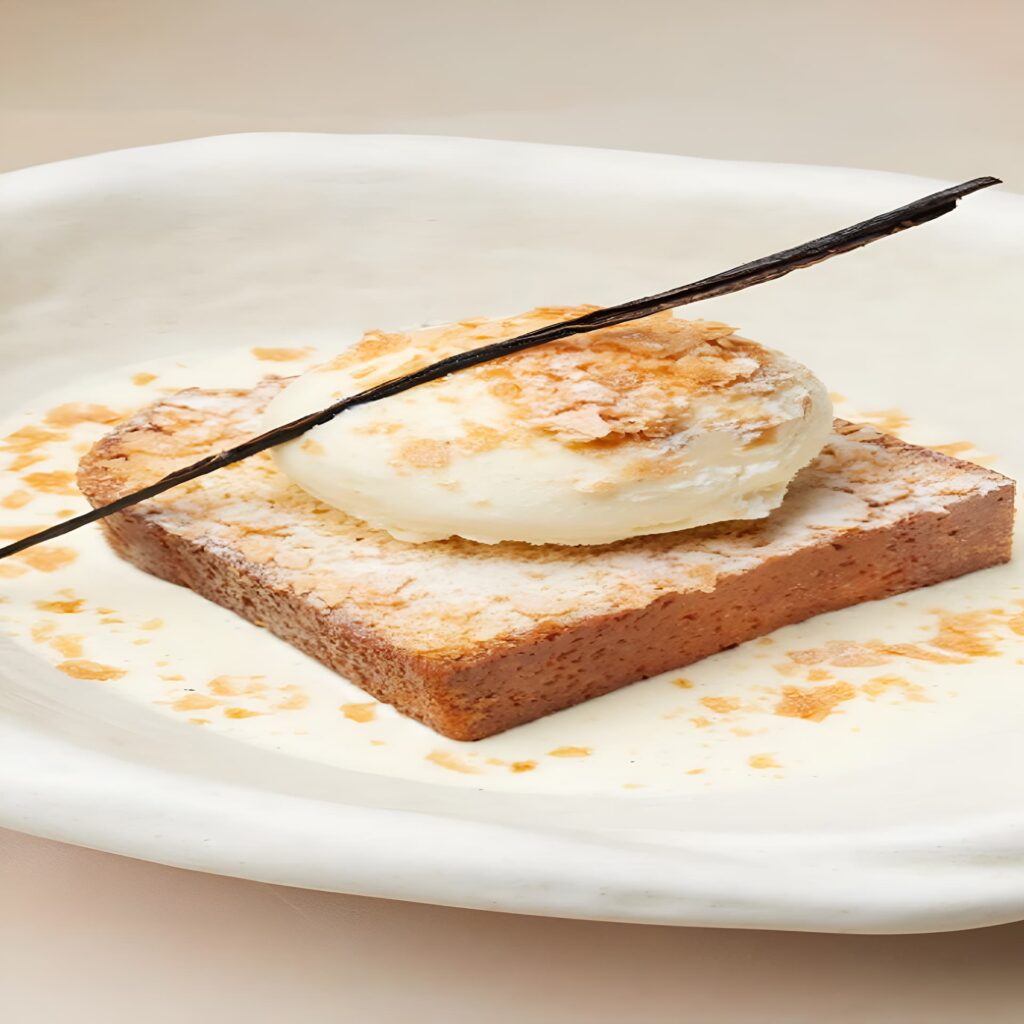AMAYA sits inside Dubai Mall, where culinary excellence meets breathtaking vistas. From our terrace you’ll enjoy direct views of the Burj Khalifa and the Dubai Fountain shows, while our elegant indoor lounge looks onto the Dubai Mall waterfalls. This setting is the perfect backdrop to explore the story of sushi—an enduring craft that balances tradition, precision, and freshness—before savoring carefully prepared Japanese classics alongside AMAYA’s global menu and premium shisha. We are open daily from 10 AM – 1 AM and operate as a non-alcoholic restaurant in Dubai, serving an extensive range of fresh juices, mocktails, signature drinks, smoothies, and hot beverages.
Key Takeaways:
- Sushi traces its roots to Southeast Asia’s early fish-preservation techniques that later evolved into Japanese narezushi and, eventually, today’s vinegared rice styles.
- Edomae (Tokyo-style) sushi refined the focus on seasonality, technique, and freshness, laying the foundation for modern nigiri and maki.
- Sushi’s global rise introduced it to diners worldwide while core traditions—quality rice, pristine seafood, and skilled craftsmanship—remain central.
What Are the Origins of Sushi?
Long before sushi reached modern counters, it began as a way to preserve fish. In parts of Southeast Asia, fish was layered with rice and salt for months, creating narezushi—a lactic fermentation that protected the fish and produced a pleasantly tangy flavor. Over centuries, Japanese cooks refined these methods, gradually shifting from long fermentation to using seasoned rice (sumeshi) with fresh seafood, paving the way for the sushi we recognize today.
From Preservation to Pleasure
Classic narezushi relied on time and patience: fish (often freshwater species) was cleaned, packed in rice, and left to ferment. The rice was typically discarded and the fish eaten. As culinary practices evolved, cooks began flavoring freshly cooked short-grain rice with rice vinegar, sugar, and salt, enabling faster preparation while retaining a bright, balanced taste. This shift transformed sushi from a preservation strategy into a refined dining experience.
How Did Sushi Evolve in Japan?
In the Edo period, bustling city life demanded food that was delicious, fresh, and convenient. Street-side vendors in Edo (now Tokyo) popularized quick, hand-formed bites of vinegared rice topped with expertly prepared seafood—Edomae sushi. The emphasis moved to immaculate sourcing, precise knife work, and techniques such as light marination or gentle simmering to highlight seasonal fish.
The Development of Edomae Sushi
Edomae sushi prioritized pristine seafood like tuna (maguro), amberjack (buri), and eel (unagi). Chefs refined methods—brushing with soy, briefly curing, or slow-simmering eel—to draw out depth and umami. What began as quick, satisfying fare became a respected culinary art, celebrated for restraint, balance, and the harmony between rice and topping.
Regional Sushi Traditions Across Japan
Japan’s regions contributed distinctive forms beyond Tokyo’s nigiri. In Osaka and the wider Kansai region, oshizushi (pressed sushi) layers seasoned rice and marinated fish into tidy blocks, then slices them into jewel-like pieces. Hokkaido, famed for its cold waters, showcases abundant seafood on rice in kaisendon (seafood bowls) and lavish chirashizushi (scattered sushi). Across Japan, variations like battera (pressed mackerel) and colorful chirashi reflect local catches and long-honed techniques.
What Ingredients Define Traditional Sushi?
Rice: The Foundation of Every Bite
Short-grain Japonica rice is the heart of sushi. Cooked to a tender, slightly sticky texture and seasoned with a warm blend of rice vinegar, sugar, and salt, it provides gentle acidity and fragrance. Each grain should glisten and separate easily, supporting toppings without overpowering them.
Seafood & Classic Pairings
Beloved sushi fish include tuna, salmon, yellowtail, and eel. Preparation varies—some cuts are served raw for purity of flavor; others are lightly cured or simmered to deepen umami. Traditional accompaniments such as nori, fresh wasabi, and pickled ginger cleanse the palate and accentuate subtle textures and aromas.
How Did Sushi Gain Popularity Worldwide?
Sushi’s expansion beyond Japan accelerated in the late twentieth century as travelers and chefs introduced its techniques abroad. As sushi counters opened in major cities, diners discovered the appeal of clean flavors, seasonality, and craftsmanship. Today you can find classic nigiri, maki, and chirashi around the globe, prepared with respect for the fundamentals: quality rice, careful sourcing, and precise technique.
Modern Interpretations That Respect Tradition
Contemporary restaurants present sushi in ways that suit today’s lifestyles while honoring its roots. You’ll see impeccable nigiri served omakase-style, refined rolls with time-tested combinations, and elegant chirashi that spotlight seafood variety. Even as menus expand, the spirit remains the same: balance, seasonality, and attention to detail.
Sushi in Today’s Dining Culture
Elevated Counters & Relaxed Settings
From intimate counters to lively lounges, sushi adapts to the moment. In refined settings, guests watch chefs shape each piece to order; in more casual environments, neatly made rolls and hand rolls offer convenience without compromising standards. Across formats, the essentials—excellent rice, pristine fish, and thoughtful service—define the experience.
The AMAYA Experience in Dubai Mall
At AMAYA , guests enjoy a sophisticated yet welcoming ambiance with two iconic views: the Burj Khalifa and Dubai Fountain outdoors, and the calming Dubai Mall waterfalls indoors. Our menu spans authentic global cuisines—including Japanese classics—crafted to international standards. As a non-alcoholic restaurant in Dubai, we focus on premium refreshments: freshly pressed juices, signature mocktails, iced beverages, and artisanal coffees and teas. For guests seeking a leisurely social moment, our premium shisha lounge offers 15+ flavors (from Double Apple and Mint to Mango and Blueberry Mint) served in both the indoor lounge and the outdoor balcony.
Whether you’re joining us for a relaxed lunch, a family dinner, or a late-night gathering, AMAYA’s extended hours—10 AM – 1 AM daily—make it easy to plan your visit around fountain show times or an evening stroll through Dubai Mall.
Presentation & Plating in Fine Dining
Elegant plating enhances the sushi experience. Dark ceramics make the colors of fish and rice pop; minimalist arrangements keep attention on the craftsmanship. Thoughtful garnishes—microgreens, a precise brush of soy, or a delicate slice of citrus—add aroma and texture without distraction, inviting diners to appreciate balance and seasonality.
Frequently Asked Questions
What is the history of sushi and how did it evolve?
Sushi began as fish preserved with rice and salt in early Southeast Asian traditions, became narezushi in Japan, and later shifted to vinegared rice and fresh seafood during the Edo period. Today’s nigiri, maki, and chirashi reflect this journey from preservation to culinary artistry.
How did sushi become popular outside Japan?
As Japanese culinary culture spread worldwide, chefs and diners embraced sushi’s purity and craftsmanship. Restaurants introduced classic techniques internationally, leading to broad appreciation and availability while maintaining respect for traditional methods.
What are traditional sushi types?
Nigiri (hand-formed rice topped with fish), maki (rolled sushi), oshizushi (pressed sushi, common in Kansai), and chirashizushi (scattered toppings over rice) are longstanding styles centered on seasoned rice and quality ingredients.
Can I enjoy authentic sushi in Dubai at AMAYA?
Yes. Inside Dubai Mall, AMAYA prepares Japanese staples with attention to detail in a setting that offers both Dubai Fountain/Burj Khalifa views and indoor waterfall views. Pair your meal with our extensive non-alcoholic beverage menu or unwind with premium shisha in elegant indoor and outdoor spaces.
Plan Your Visit
Find us inside Dubai Mall and make the most of the location—perfect for a pre-show dinner by the fountains, a business lunch with waterfall vistas, or a late-night shisha session with friends. Explore more about AMAYA’s story and offerings on our About page and discover why we’re a favorite Dubai Mall restaurant for sushi lovers.
Useful Links
- Restaurant with Burj Khalifa views
- Dubai Fountain view restaurant
- Best shisha in Dubai
- Best non-alcoholic drinks in Dubai
- About AMAYA
- Best sushi restaurant in Dubai
AMAYA — inside Dubai Mall, open daily 10 AM – 1 AM.

